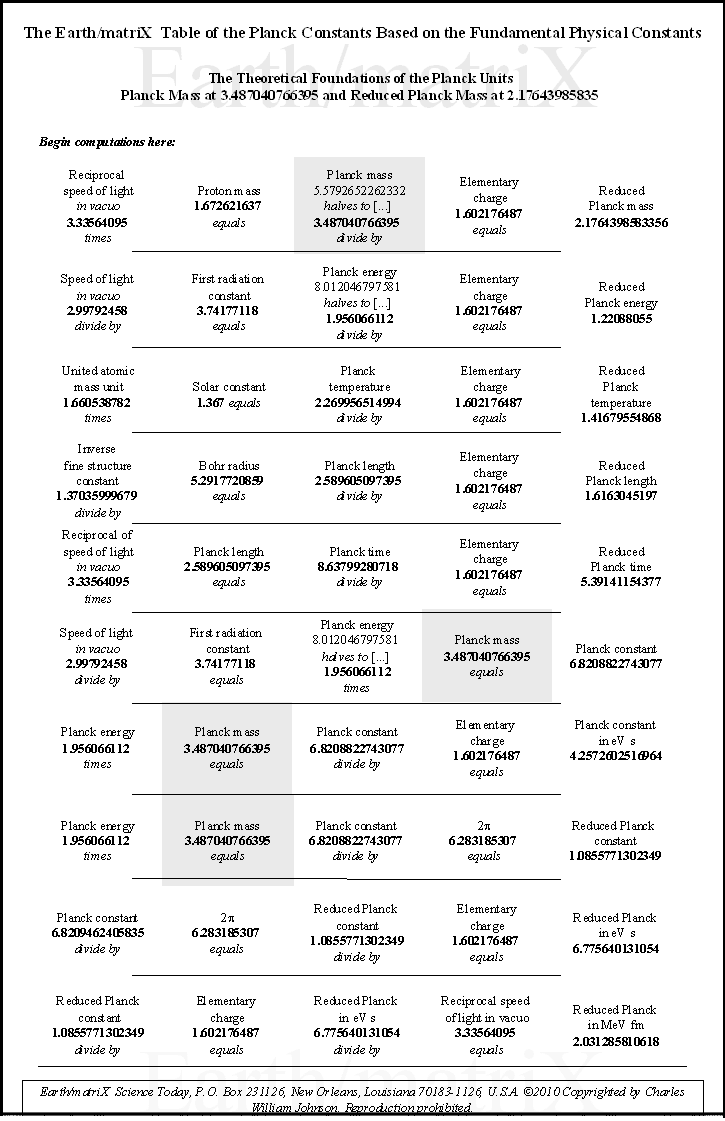
Dedicated to the preservation of human knowledge in the arts and sciences,
and to the advancement of human survival and to that of our planet in a world threatened by our own development.
|
|
|
The Earth/matriX Tables of
Planck Constants by Charles William Johnson Table I.
|
||||||||||||||||||||||||||||||||||||||||||||
|
|
||||||||
|
of Electrons in Shells of Atoms: The 1.3611111 Ratio. (pdf) |
||||||||
|
|
||||||||
|
|
||||||||
|
|
||||||||
|
|
||||||||
|
||||||||
|
of the Elements: The correct placement of the elements on the periodic table concerns the search for patterns within the characteristics and properties of the elements and their atoms. |
||||||||
|
|



